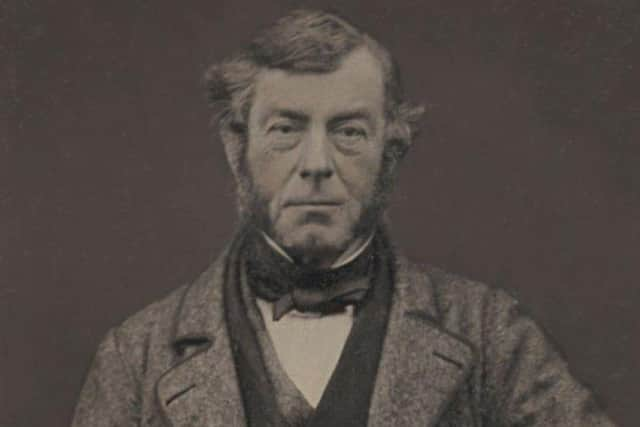Intriguing story of Glenarm family’s connections to New Zealand
and live on Freeview channel 276
For the New Zealander is aiming to write a biography of his great grandfather which will shed considerable light on links between Glenarm and Alan’s native land.
George Stewart O’Halloran (Georgie) was born in 1845 and was the son of Richard and Jane Halloran, whose maiden name was Disney and is believed to be connected to Walt Disney. He was baptised in St. Patrick’s Church in Glenarm.
Advertisement
Hide AdAdvertisement
Hide AdAt the time of the 1851 census Georgie was living with his parents, eight siblings and four servants in Glenarm. His uncle (who was also George) had a thriving shipping firm and his nephew worked as a seaman/cadet with the company until he and another man – the son of the rector of St. Patrick’s – went to Central Otago in New Zealand in search of gold.


The quest was ultimately unsuccessful, but George settled in Wellington, where he joined the military in 1862, earning the title of captain.
Alan has been piecing together the family history over many years and has unravelled how the spelling of the name changed from O’Halloran to Halloran – and then, in the context of the New Zealand branch, back to O’Halloran.
He found that the family dropped the O following the 1798 Rising, in which an ancestor O’Halloran served as a lieutenant in the Glenarm Militia and helped put down the rebellion locally. However, his great grandfather, having settled in New Zealand, elected to change the name back to O’Halloran.
Advertisement
Hide AdAdvertisement
Hide AdHis great-grandfather’s uncle George Halloran, who was the first of the family to settle in New Zealand, following a time in Melbourne, died in 1868 and is buried in the old Bolton Street Cemetery in Wellington, where the grave is still maintained by Alan and other members of the family.
His research has detailed so far that two of George’s nephews – Gerald and George (the subject of his planned biography) were encouraged by their uncle to a new life under the Southern Cross.
While there is plenty of information about the New Zealand settlement of the O’Hallorans, Alan is keen for information from their native Glenarm.
He has visited the village on a number of occasions, establishing friendships which continue, and is hopeful of gathering as much information as possible about the family in Glenarm itself.
Advertisement
Hide AdAdvertisement
Hide AdOne of the family heirlooms which was passed down to Alan was a daguerreotype (early photograph) of Richard O’Halloran who died in Nelson, New Zealand, in 1869 shortly after emigrating, with his younger children.
“This set me off on my quest to learn of my O’Halloran forbears, resulting in three trips to Ireland including attending communion in St. Patrick’s Anglican Church where Georgie was baptised in October 1845. I was born in Wellington 101 years later, in 1944, the fourth son and four generations down from my pioneer ancestor who left Ireland in 1860, never to return,” Alan said.
In the biography which he intends to write, Alan has decided to refer to his great-grandfather as Georgie – he has found a number of children being named George O’Halloran in the family over the years, which is adding to confusion!
Alan has involved two Irish-born academics in New Zealand, Dr Jack Dowds and Dr Rory Sweetman and Ulster academic Dr David Hume in his quest. Anyone who can help with information on the Glenarm Hallorans can contact the latter at [email protected]
Advertisement
Hide AdAdvertisement
Hide AdClick here to read: NI centenary: Browsing the Larne Times pages of January 1921
--
Thank you for reading this article. We’re more reliant on your support than ever as the shift in consumer habits brought about by coronavirus impacts our advertisers. Please consider purchasing a copy of the paper. You can also support trusted, fact-checked journalism by taking out a digital subscription of the News Letter.